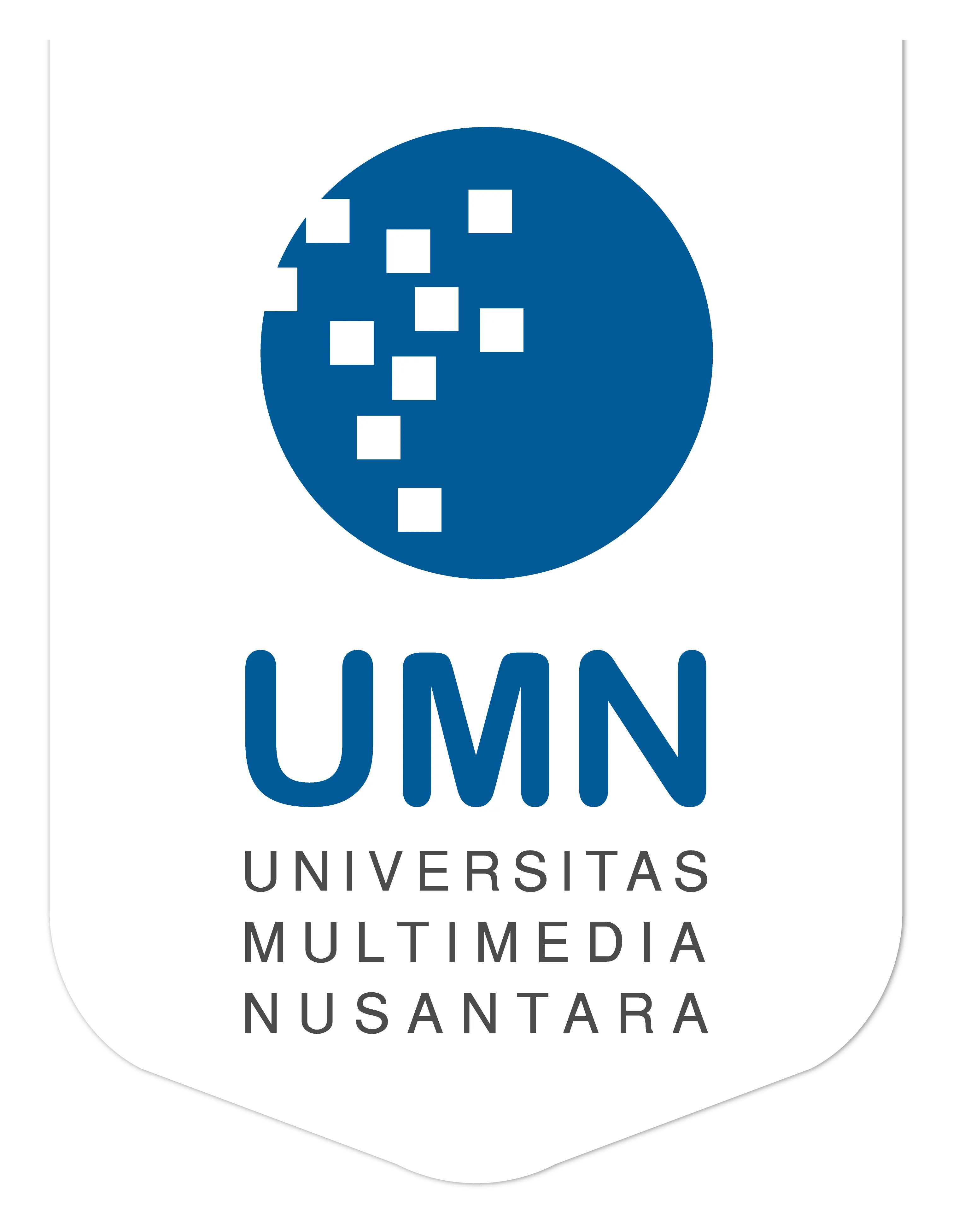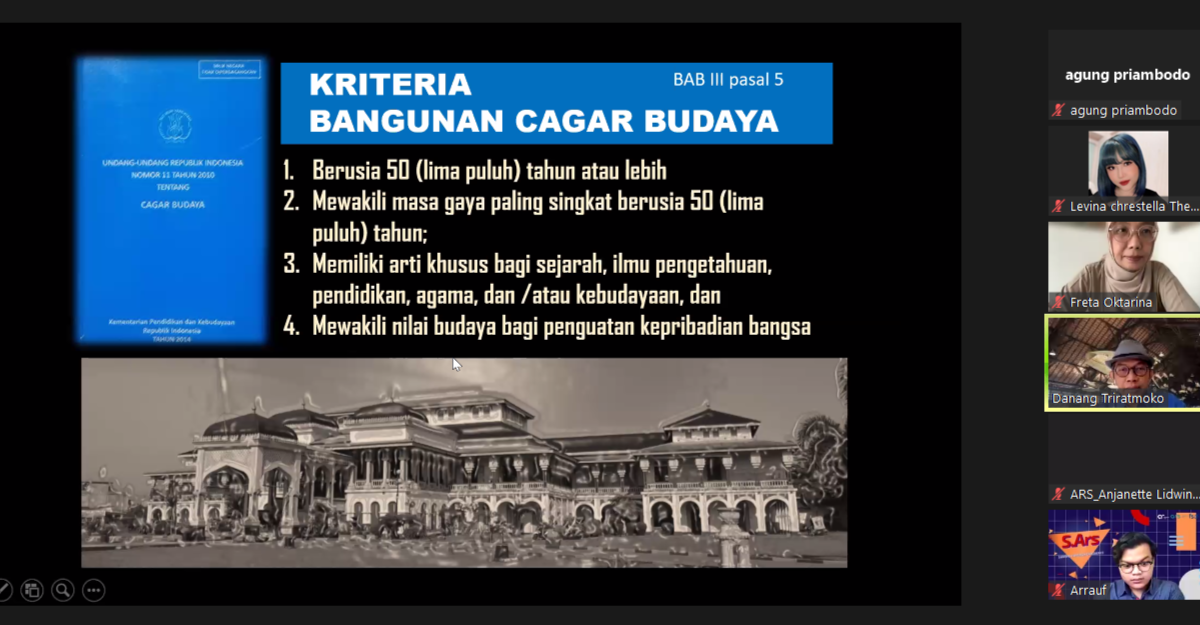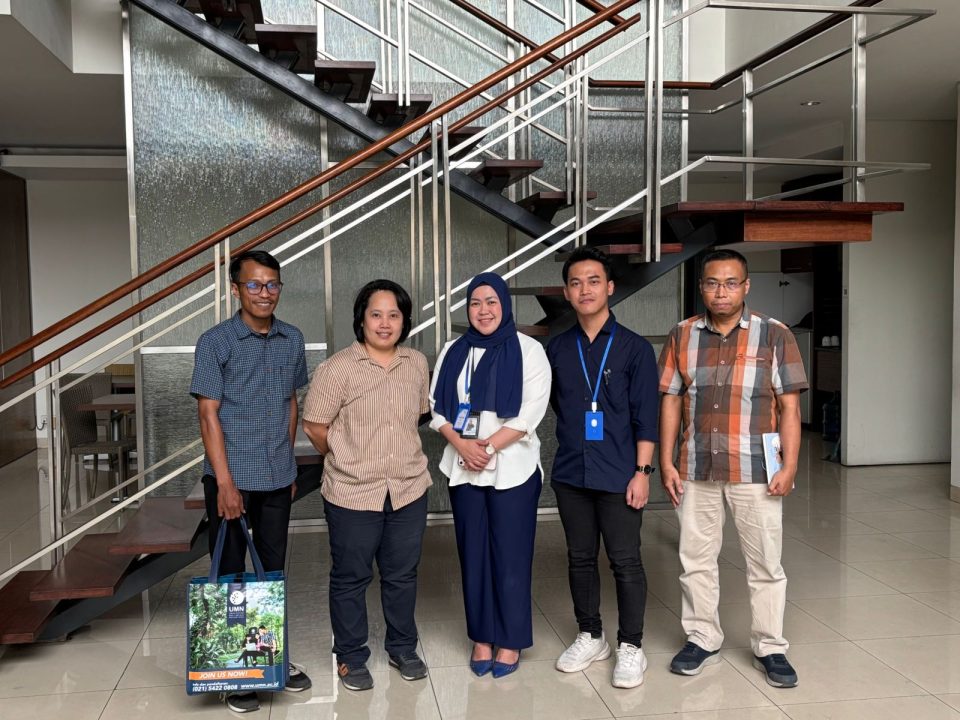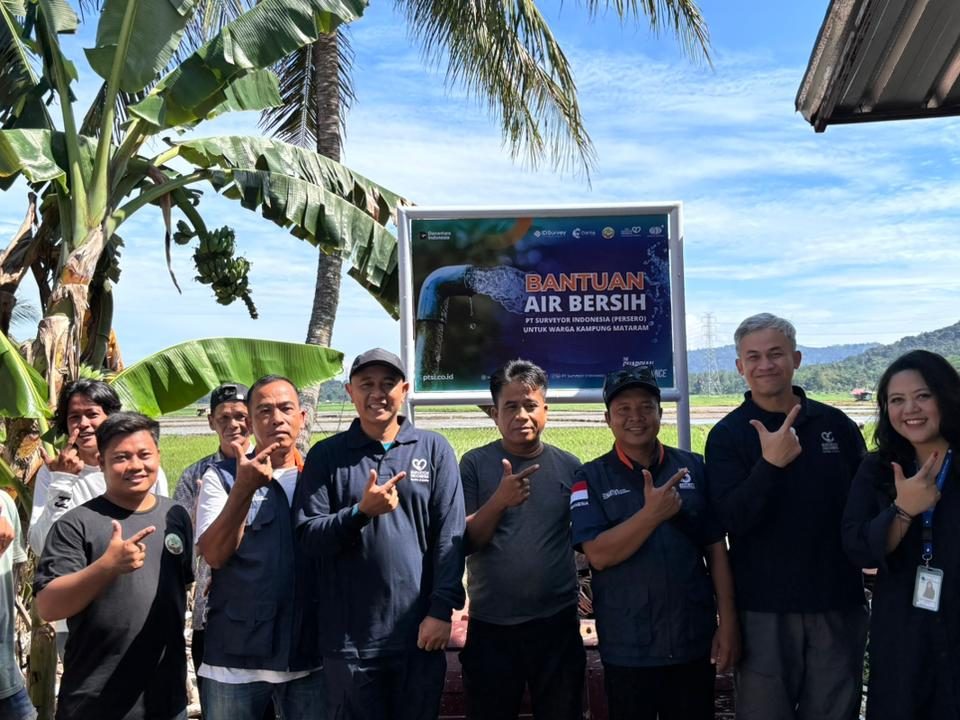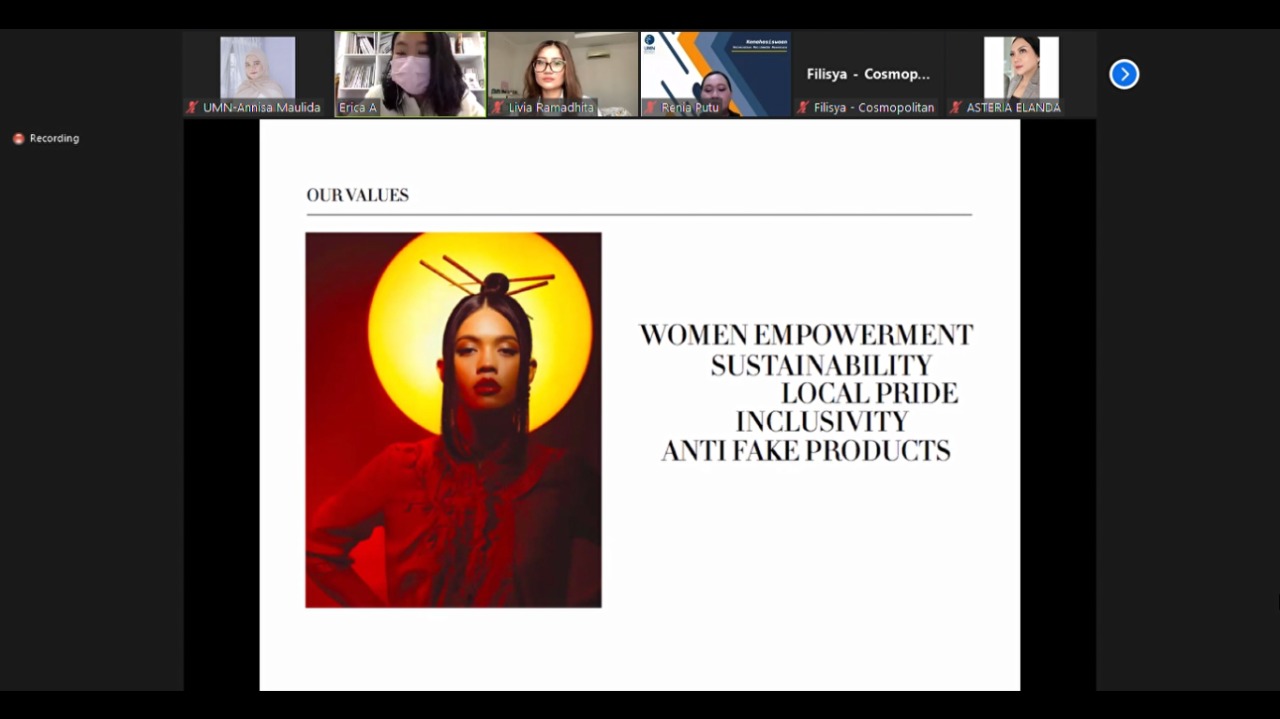
Sharing Session in The Citizen Journalism Program: The Joys of Writing With The Harper’s Bazaar and Cosmopolitan’s Editorial Team
March 22, 2022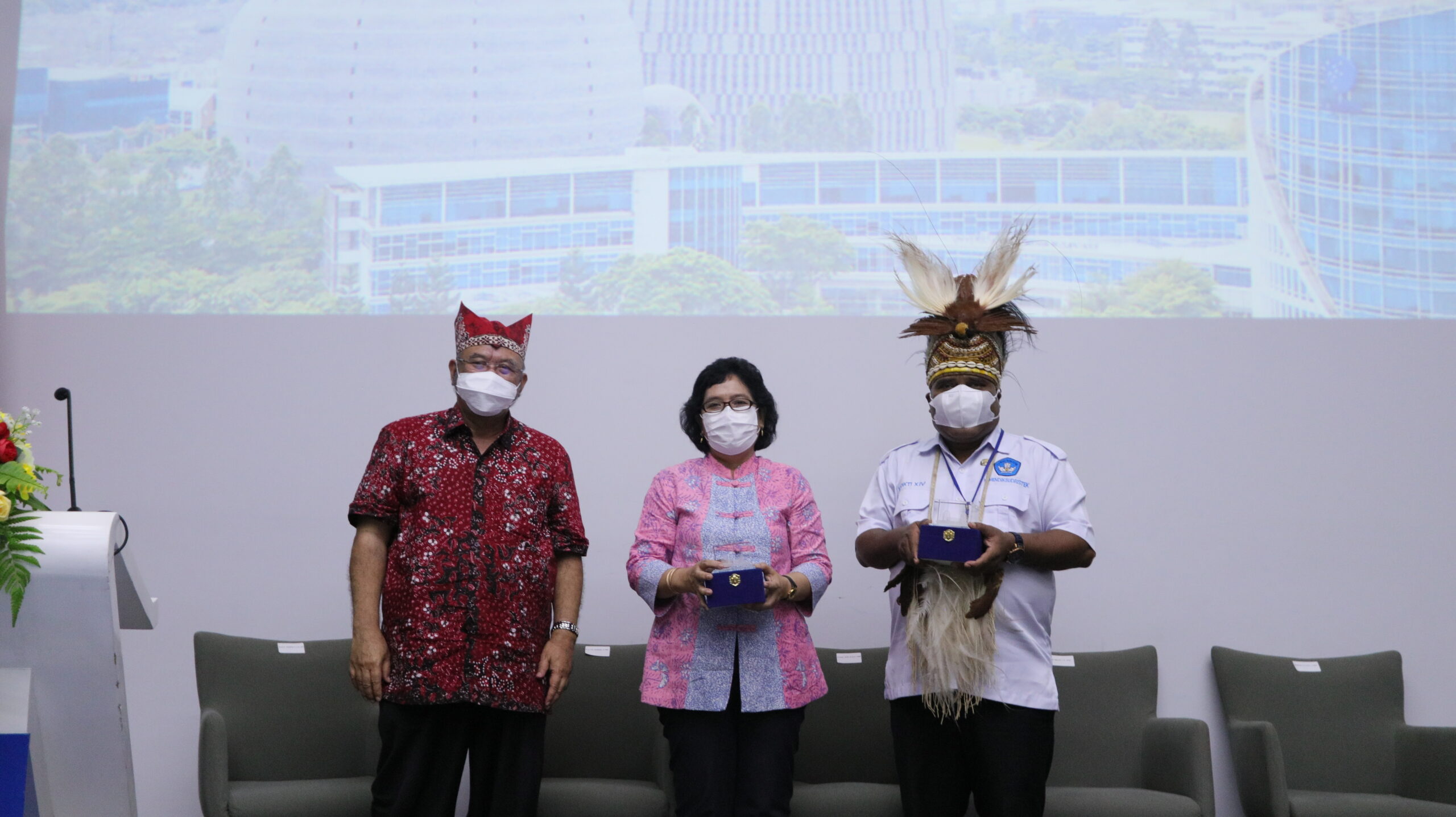
UMN Receives MBKM Comparative Study Visit from LLDIKTI Region XIV Papua and West Papua
April 6, 2022
Ir. Danang Triratmoko, M.Ars, IAI, AA. (dok. UMN)
TANGERANG – Multimedia Nusantara University Architecture Student Association (HIMARS UMN) held the 2nd Sharing Through Experience (S.Ars-2) entitled “Heritage in Architecture” via Zoom on Thursday (31/03/22). This webinar invites architect Ir. Danang Triratmoko, M.Ars, IAI, AA. as a keynote speaker to discuss working with historical heritages in architecture.
“We are fortunate to have Mr. Danang. Mr. Danang has worked for more than ten years as an expert on historical architectural projects,” Freta Oktarina, a lecturer in Architecture at UMN, said.
Danang is an architect who specializes in cultural heritage buildings or ancient buildings. He has experience working as a Principal at dhDT Architect with projects that often touch on historical topics, such as the Revitalization of the Maritime Museum, Rehabilitation of Cultural Heritage Buildings, and the Protestant Church of the Koinonia Congregation in 2020.
The theme of this webinar is closely related to the UMN Architecture Study Program curriculum, “Architectural Design (AD) 5”. Theodorus Cahyo, a lecturer in Architecture at UMN, explained that this is the last level of the studio.
“In AD 5, students learn to design an area. One of the challenges prepared for students is to not only design an area but one that has elements of cultural heritage,” Theodorus explained.
Related to the UMN Architecture Study Program curriculum, Theodorus also mentioned an interesting case study regarding the MRT station points’ planning and the area surrounding them. UMN’s Architecture study program tries to encourage students and lecturers to participate in providing knowledge about the area around the MRT phase II Jakarta project.
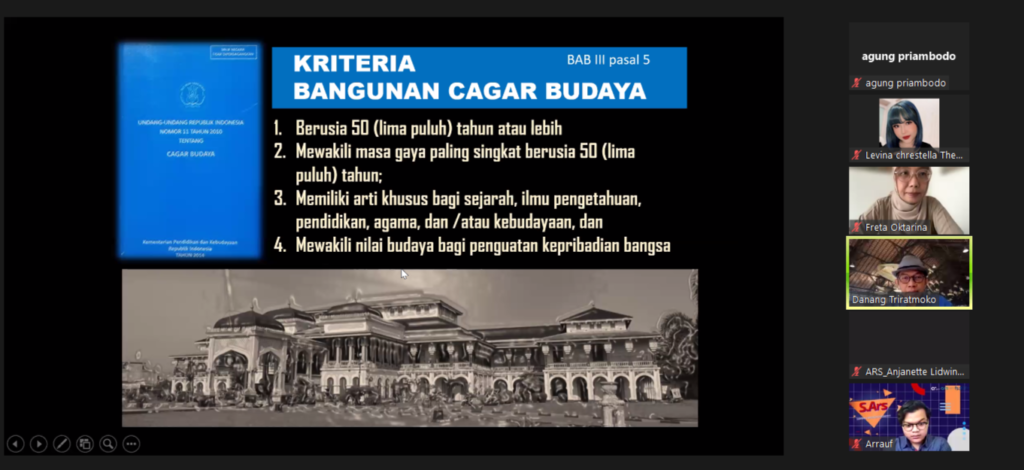
Webinar Sharing Through Experience ke-2 (S.Ars ke-2) bertajuk “Heritage in Architecture” (dok. UMN)
Before sharing his experience working with old and historic buildings, Danang explained the four criteria for cultural heritage buildings according to the Law of the Republic of Indonesia on Cultural Conservation. First, they are buildings that are fifty years old or more. Second, it represents the shortest style period of fifty years. Third, it has a special meaning for history, science, education, religion, and culture. Fourth, representing cultural values for strengthening the nation’s personality.
Also read Webinar HIMARS UMN: Use of Detail to Create the Story of Your Concept in Architecture
When dealing with cultural heritage buildings, Danang emphasized the importance of following the rules that can be read in the Minister of Public Works and Public Housing (Permen) PUPR Regulation Number 19 of 2021. In summary, when building, changes made and elements added are as minimal as possible, maintaining authenticity wherever possible. Of course, development must also be carried out with great care and responsibility.
It is essential to conduct thorough research on the building’s structure, materials, and functions in the development planning process. This is because the materials and technology used to construct old buildings may not be found today.
Although it is important to maintain and conserve historical buildings, it does not mean that construction must return the building to its original state. Danang gave an example of his project in Kota Tua that combines old and new aspects of buildings, mixing modern buildings with old buildings without changing the characteristics of the Kota Tua atmosphere.
Even though history and aesthetics are crucial elements, Danang also emphasized the function of the building. Danang explained that it must be ensured that the historic building is not only conserved but has functionality and can be enjoyed by the public, such as changing the function of the building into a restaurant or cafe.
“The most important thing is knowing the history of the building and the importance of the building. Knowing what is important will help you choose which parts are needed and not needed, also keeping the area and the environment harmonious,” said Danang.
*by Levina Chrestella Theodora – Universitas Multimedia Nusantara News Service
Kuliah di Jakarta untuk jurusan program studi Informatika| Sistem Informasi | Teknik Komputer | Teknik Elektro | Teknik Fisika | Akuntansi | Manajemen| Komunikasi Strategis | Jurnalistik | Desain Komunikasi Visual | Film dan Animasi | Arsitektur | D3 Perhotelan | International Program, di Universitas Multimedia Nusantara. www.umn.ac.id
